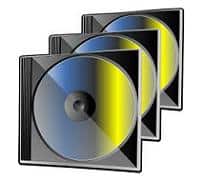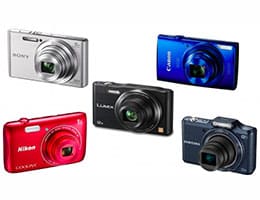 The adjective compact comes from the Latin compactus , in turn derived from compingĕre (which can be translated as “to bring together” ). Something compact is condensed, summarized or tight, without free spaces or pores . Compact is also called something that is small in size or that is solid .
The adjective compact comes from the Latin compactus , in turn derived from compingĕre (which can be translated as “to bring together” ). Something compact is condensed, summarized or tight, without free spaces or pores . Compact is also called something that is small in size or that is solid .
For example: “Starting next week, the newspaper will begin to be published in a compact format ,” “When I turned eighteen, my father gave me a compact car,” “We have managed to form a compact, seamless team.”
A compact disc , also known by the English expression compact disc or the acronym CD , is an optical disc that is used to store digital information, such as music , photographs and videos.
These compact discs have a thickness of 1.2 millimeters and a diameter of 12 centimeters. Depending on the type of data they contain, they can be played on computers , audio equipment, DVD players or other machines.
Compact discs reached their peak in the 90s, but their popularity gradually declined with the emergence of music in digital format. At first, piracy threatened to destroy the industry, but over time new digital distribution options appeared that benefit artists and consumers, with affordable prices and satisfactory quality, although not as faithful to the source as that of the CD. (note that the compact disc also sacrifices certain nuances of the recordings to store so many tracks).
A compact car , on the other hand, is a small car. Furthermore, it can be said that a car is compact when it has a Hatchback- type body (with a passenger cabin that includes the integrated trunk, accessible through a rear door) or when it belongs to the so-called C segment (with space for five adults). .
Finally, anything that has a smaller size or format than others in its class can also be classified as compact: a compact camera , a compact phone , a compact city , etc. Compactness is generally associated with simplicity or comfort of use.
 Taking the example of the compact camera we can point out other characteristics that sometimes emerge from products of this type. Although on the one hand it offers the advantage of being able to be carried in any bag or even a pocket, of not having moving parts that can be easily lost or broken and of being very accessible to any user, with or without prior knowledge of photography, the Compact camera is much inferior to SLR in terms of performance , so it could not replace it in any situation.
Taking the example of the compact camera we can point out other characteristics that sometimes emerge from products of this type. Although on the one hand it offers the advantage of being able to be carried in any bag or even a pocket, of not having moving parts that can be easily lost or broken and of being very accessible to any user, with or without prior knowledge of photography, the Compact camera is much inferior to SLR in terms of performance , so it could not replace it in any situation.
On the other hand, the consumer must understand these differences before making a decision, since not everyone needs the complexity that a traditional or professional product offers. Currently, cameras do not have even a hint of the popularity that they achieved decades ago, due to the high quality of the cameras present in mobile phones ( smartphones ); Here we have a peculiar example of an ultra-compact product that leaves behind a compact one, although it also loses performance in the process of reducing its dimensions.
In the field of graphic web design, the concept seems to have more advantages than disadvantages since it refers to a "clean" presentation, with few options in sight and an easy-to-understand user interface . For example, a compact design usually groups as many options as possible under the same section, which is accessed from a single button, and in the same way seeks to centralize all functions in a single toolbar.
